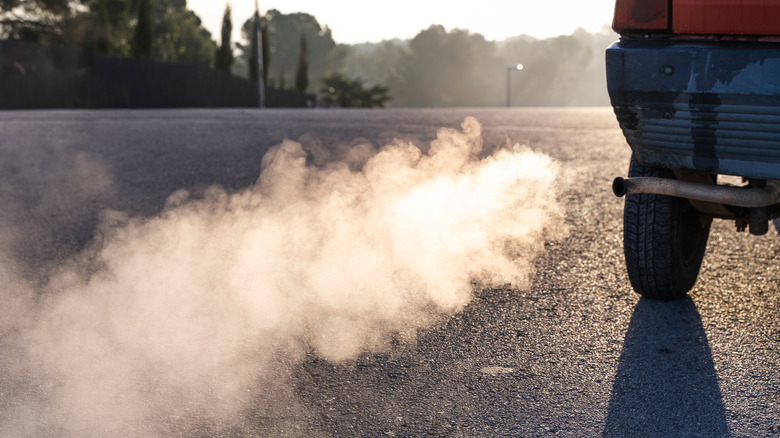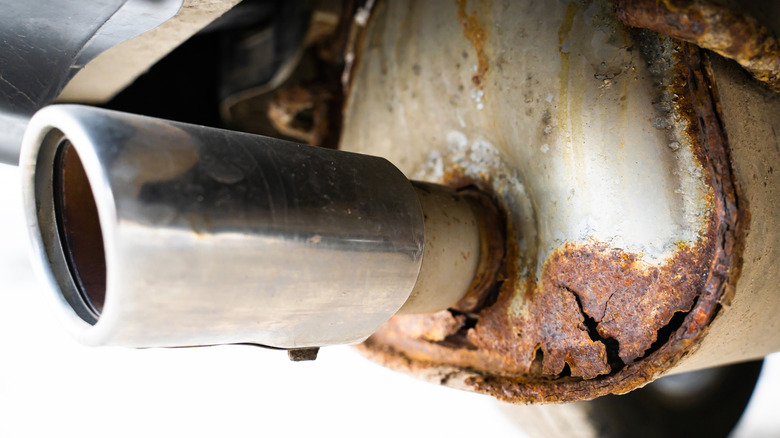How To Measure Exhaust Back Pressure (And What Should The PSI Be?)
You roll up to a stop sign and your chest tightens with dread. Whenever you accelerate, your engine sputters, backfires, and in general sounds horrible. Plus your car smells awful. All of these symptoms could indicate a blocked exhaust system.
To find out if your exhaust system is blocked, you can measure the exhaust back pressure with a back pressure gauge. Generally, when idling, exhaust back pressure should not exceed 1-1/4 PSI. At 2500 RPM, the pressure reading should not exceed 3 PSI. Most back pressure gauges are marked in green and yellow to help you easily discern whether back pressure is excessive or acceptable.
If the back pressure exceeds either of those measurements, you've got a blockage or other restriction in your exhaust system. You'll also want to look for big, erratic jumps in pressure. Small movements and regular, small pulses are normal. It's even normal to see pressures under one PSI, but exhaust back pressure greater than 3 PSI can cause major engine trouble if it's not addressed.
How to use an exhaust back pressure gauge
The hardest part of measuring back pressure is finding the right place to tap into the exhaust system. If you've got a custom exhaust, the best and easiest way is to have the exhaust shop install O2 (oxygen sensor) bungs in the places you're most interested in taking measurements. If you don't have a custom exhaust, you can find an O2 sensor, unscrew it, and attach your pressure gauge.
Testing back pressure is a two-person job. You'll need one person to observe the gauge and one person to rev the engine to get the desired readings. Erratic readings could indicate a misfire or clogged catalytic converter. If the pressure shoots up above 3 PSI, there's typically some kind of restriction or blockage.
Do you need to check exhaust back pressure without a back pressure gauge? You can use the card test: Using a 3-by-5-inch card — like an index card — you can tell pretty quickly if there's a back pressure problem. Simply hold the card over the opening of the exhaust pipe and watch how the card moves. Gentle, consistent movement is a good sign. But, if the card flaps around violently or inconsistently, you've got some kind of pressure problem on your hands. Figuring out the cause of bad exhaust back pressure will be a bit more challenging.
Causes of an exhaust blockage
A blocked exhaust system can be caused by a number of things. An over-rich fuel mixture generates more carbon as it burns, which can lead to buildup in the exhaust. Over time, the catalytic converter that's required on nearly every car can become clogged with carbon build up and restrict exhaust flow. If you give the catalytic converter a gentle tap with a rubber mallet and it rattles, it needs to be replaced. Or you can try to clean your catalytic converter at home.
The problem could be as simple as a bad muffler or kinked tailpipe. If your muffler or tailpipe is dented or otherwise damaged, it could be restricting the exhaust system. This is especially true if you live in an area prone to road debris, like rural areas with gravel roads. Mud, gravel, and even sticks can get lodged in the exhaust, leading to blockage. To check, you can remove the exhaust pipe. If your machine is running normally afterwards, you've found your problem.
If you suspect that your exhaust system is blocked, it's very important that you don't drive the vehicle. Excessive exhaust pressure can cause long-term damage and lead to costly repairs. And exhaust back pressure can exacerbate any existing vehicle exhaust leaks, which can be dangerous to your health. If you're not confident troubleshooting your own exhaust, always seek the advice of a trusted mechanic or exhaust technician.


